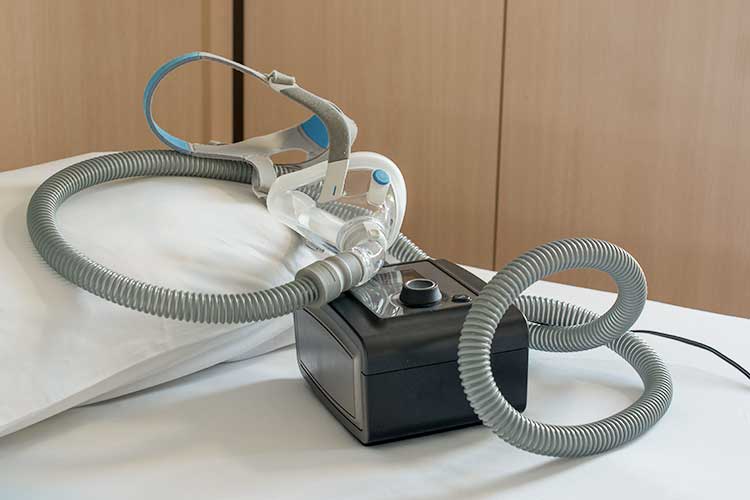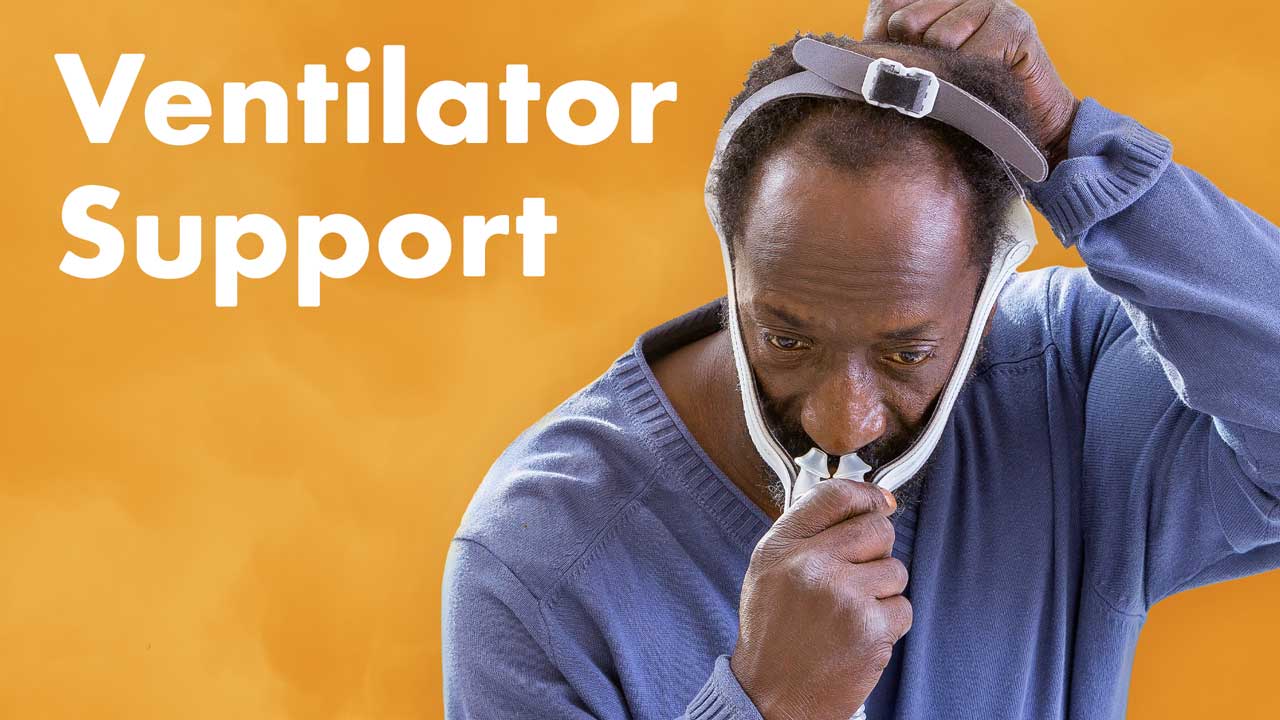Note: This article is intended for NDIS workers and providers. For a more clinically-focused article on ventilator support feeding, see Ventilator Management in the Community.
Workers employed by National Disability Insurance Scheme (NDIS) providers, who deliver supports to NDIS participants requiring ventilator support, must be able to provide appropriate care.
Ventilator Support in the NDIS Practice Standards
Ventilator Management is set out in the NDIS Practice Standards under the High Intensity Daily Personal Activities Module.
This Practice Standard aims to ensure that NDIS participants who require ventilator management receive supports that are appropriate, relevant and proportionate to their individual needs (NDIS 2021).
Under these standards, NDIS providers must meet the following quality indicators:
- Participants are enabled to participate in the assessment and development of a ventilator management plan. This plan identifies possible risks, incidents and emergencies, and what actions need to be taken to manage these situations, including the escalation of care, if necessary. The participant’s health status is reviewed regularly (with their consent).
- Workers providing ventilator support are informed by appropriate policies, procedures and training plans.
- Workers providing ventilator support have received all necessary training from a qualified health practitioner or another appropriately qualified individual.
(NDIS 2021)
In order to recieve ventilator support under the NDIS, a participant must have a ventilator management support plan in place. This support plan should be developed in consultation with a health practitioner (NDIS 2022).
The participant’s support plan may outline support needs such as:
- Setting up and operating the ventilator and related equipment
- Issues to look out for
- Required actions to take in response to risks, incidents and emergencies.
(NDIS 2022)
Ventilator support may either be in the form of:
- Non-invasive ventilation, or
- Invasive ventilation via a tracheostomy.
(NDIS 2022)
NDIS workers may need to support participants with equipment such as:
- Bilevel positive airway pressure (BiPAP) machines
- Continuous positive airway pressure (CPAP) machines
- Humidifiers
- Airway clearance devices
- Suctioning
- Manual ventilation devices
- Oxygen.
(NDIS 2022)

Ventilator Support Skills Descriptors
The NDIS Practice Standards: High intensity Support Skills Descriptors document sets out the skills and knowledge required by NDIS workers providing ventilator support.
Skills Required for Ventilator Support
Workers providing ventilator support under the NDIS should be able to:
- Understand and follow the participant’s support plan
- Read the participant’s advanced care directive (where applicable)
- Ask the participant about their expectations, capacity and preferences for being involved in the delivery of their care
- Ask the participant about their communication preferences, and communicate in their preferred way
- Follow hygiene and infection control principles, including hand hygiene, disinfecting the environment and wearing gloves
- Ensure required equipment and consumables are available and prepared for use
- Record and document equipment checks in a log book - this may include checking:
- Back-up ventiltors
- Oxygen levels in spare tanks
- Suction equipment
- Provide support in the least intrusive and restrictive way practicable, in alignment with the participant’s daily routine and preferences
- Support the participant to position themselves for ventilation
- Help the participant put on and fit their mask
- Start, operate and monitor the ventilator
- Respond to alarms from the ventilator
- Identify and immediately escalate issues, such as fatigue, anxiety or breathing problems, to an appropriate health practitioner
- Recognise, alert an appropriate health practitioner to and take immediate action in response to airway occlusion, choking or swallowing difficulties - this might require suctioning
- Commence and maintain manual ventilation
- Check the supply of required equipment, consumables and non-consumables
- Follow equipment troubleshooting processes such as replacing tubes and batteries
- Follow emergency procedures to perform basic first aid, cardiopulmonary resuscitation or basic life support if required
- Document required information and observations in the participant’s support plan
- Work collaboratively with other members of the care team
- Discuss any changes needed to bowel care support with the participant
- Identify, document and report if the participant’s support plan is not meeting their needs
- Support the participant to provide feedback or request changes to their support plan.
(NDIS 2022)
Workers supporting a participant receiving non-invasive ventilation should be able to:
- Help the participant put on and fit their breathing mask.
(NDIS 2022)
Workers supporting a participant receiving invasive ventilation via a tracheostomy should be able to:
- Actively monitor the ventilation, including:
- Monitoring circuits
- Assessing the need for cuff inflation or deflation
- Assist the participant to keep the stoma site healthy and clean.
(NDIS 2022)
Staff Knowledge
NDIS workers who provide ventilator support are required to have knowledge on:
- The NDIS Code of Conduct and Practice Standards
- Communication supports that may be required by participants, such as assistive technologies and communication devices
- Infection control and personal hygiene practices, including specific disinfection processes for the ventilator and mask
- Their scope of practice, and the roles and responsibilities of other members of the care team
- The participant’s advance care directive (if applicable), including their preferences for emergency supports
- Requirements for a safe environment for providing ventilator support
- Types of ventilators, their main components (e.g. batteries) and their function
- Types of breathing masks and related equipment
- The anatomy of the respiratory system
- Musculoskeletal problems related to respiration and common conditions that can cause respiratory failure (including any conditions specific to the participant)
- Indicators of respiratory distress, including drowsiness, reduced level of awareness, breathing rate, nose flaring, skin discolouration, wheezing, bracing of the upper body and large chest movements when breathing
- Signs of poor skin condition and strategies for fitting and positioning breathing masks to reduce the risk of pressure injuries
- What a healthy tracheostomy stoma should look like
- Signs of an issue at the tracheostomy stoma site, e.g. wetness, infection or inflammation - and what actions are required to manage these
- When emergency procedures, including the use of back-up or manual ventilators, should be used e.g. loss of electricity or battery failure
- Common ventilator alarms (e.g. high airway pressure alarms) and how to resolve them
- When and how to escalate care or seek additional advice
- Their documentation responsibilities
- Procedures and responsibilities for requesting a review of a participant’s care.
(NDIS 2022)

NDIS providers should ensure that staff supporting participants with ventilator management the skills and knowledge outlined by the Skills Descriptors, and are reviewed annually for competency (NDIS 2022).
Test Your Knowledge
Question 1 of 3
Which one of the following is NOT a piece of equipment that NDIS workers may use for participants receiving ventilator support?
Topics
Further your knowledge
 Free
Free Free
FreeReferences
- NDIS Quality and Safeguards Commission 2021, NDIS Practice Standards: NDIS Practice Standards and Quality Indicators, Australian Government, viewed 4 February 2025, https://www.ndiscommission.gov.au/sites/default/files/2022-02/ndis-practice-standards-and-quality-indicatorsfinal1_1.pdf
- NDIS Quality and Safeguards Commission 2022, NDIS Practice Standards: High Intensity Support Skills Descriptors, Australian Government, viewed 4 February 2025, https://www.ndiscommission.gov.au/sites/default/files/2024-09/High%20Intensity%20support%20skills%20descriptors.pdf
 New
New 
